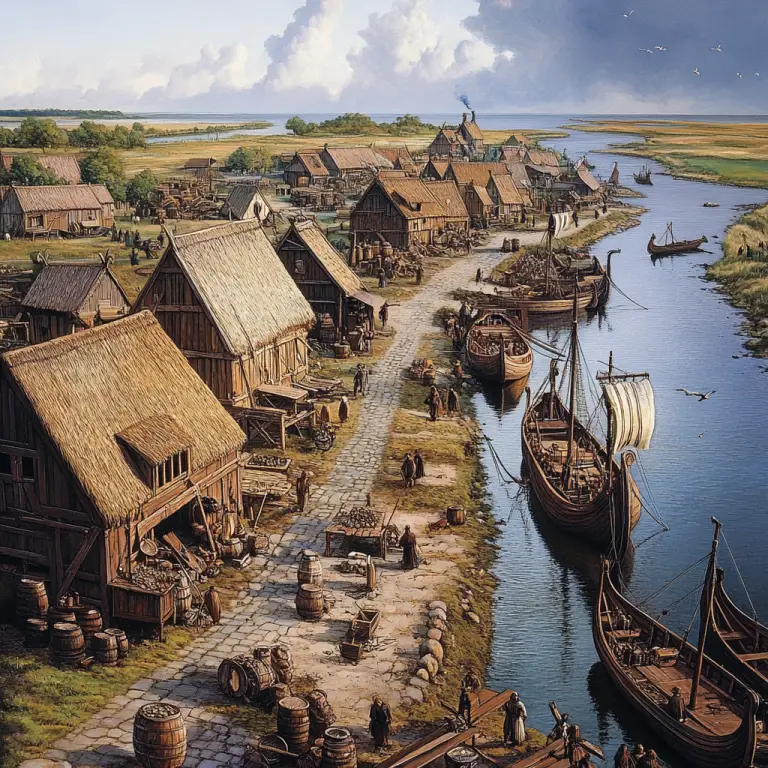Ribe, located in southern Denmark, is recognized as Denmark’s oldest town and one of the most significant Viking Age settlements in Scandinavia. Founded around the early 8th century, Ribe was a bustling hub of trade, craftsmanship, and cultural exchange during the Viking Age.
Historical Overview
Founding:
Ribe was established as a marketplace around 710-720 AD, making it one of the earliest known urban settlements in Scandinavia.
Its location near the North Sea and the Ribe River provided excellent access to maritime and inland trade routes.
Role in Viking Trade:
Ribe became a key trading hub, connecting Scandinavia to the rest of Europe and beyond.
Goods such as amber, furs, and iron were traded for luxury items like glass, silver, and silk.
Urban Development:
By the Viking Age, Ribe had evolved into a permanent settlement with streets, houses, workshops, and a harbour.
It was one of the first Scandinavian towns to develop a structured layout, with evidence of planning and zoning.
Christian Influence:
Ribe also played a role in the Christianization of Scandinavia. Around 860 AD, Ansgar, a missionary, established Denmark’s first church in Ribe.
This made Ribe a significant site for both Viking pagan and early Christian traditions.
Archaeological Discoveries
Excavations in Ribe have revealed a treasure trove of Viking Age artifacts and insights into daily life, trade, and urban development.
Settlement Layout:
Archaeologists have uncovered wooden houses, workshops, and paved streets, reflecting an organized and thriving town.
Evidence suggests areas dedicated to specific trades, such as blacksmithing, weaving, and metalworking.
Artifacts:
Thousands of objects, including tools, jewellery, weapons, and coins, have been unearthed.
Imported goods, such as beads from the Middle East and coins from the Carolingian Empire, highlight Ribe’s global trade connections.
Burials:
Viking graves in and around Ribe contain rich grave goods, indicating the presence of both wealthy merchants and skilled artisans.
The burial practices reflect a mix of Norse pagan and Christian influences during the town’s later history.
Craftsmanship:
Ribe was a centre for skilled artisans, producing high-quality goods like jewellery, combs, and textiles.
The discovery of moulds and tools shows that crafts were a significant part of Ribe’s economy.
Marketplace:
Ribe’s marketplace was a focal point of activity, with traders exchanging goods and merchants importing items from as far away as the Middle East and Byzantium.



